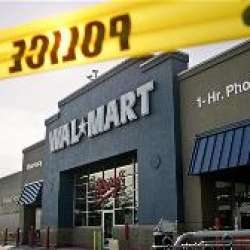|
My father worked on Thanksgiving and Christmas and other holidays. I felt sad at seeing him head to the subway in mid-afternoon, but we knew the call of the newspaper business.
He had to leave home and head for the office – breaking news, banter, coffee and snacks from somewhere, familiar faces, stories to edit. Over the years I covered a lot of Sunday ball games and Christmas afternoon basketball games at the Garden, although I don’t remember working on Thanksgiving since a few 10 AM high-school football games many years ago. At least twice, I checked into hotels close to midnight on New Year’s Eve, in order to cover a bowl game in Pasadena or Phoenix the next day. But New Year’s Eve is a good holiday to duck. In the immortal words of Marv Albert, I’d like to, but I have a game. Police work on holidays. So do doctors and nurses and orderlies. In New York, the subways run on Christmas, although not in London. Life goes on. Chinese restaurants flourish on Dec. 25, for the annual ritual of Jewish customers. What do Muslim people do on Dec. 25 in the city sometimes referred to as Londonstan? In recent days, I’ve been watching the lists of Good Companies and Evil Companies that differ about working on Thanksgiving. Wal-Mart, which corrupted people to take over a historic valley in Mexico, is making its workers show up. If Wal-Mart is doing it, it must be bad. I’ve come to the conclusion that there is no good reason for forcing – forcing – workers to show up Thanksgiving evening to herd shoppers, who presumably are there on their own volition. I suggest there is something healthy in a day of rest, even on somebody else’s Sabbath. And Thanksgiving in the United States should be a day of indulging and shouting at the tube and appreciating the people who cook and the people who scrub turkey grease off the pots. Then, at least there could be fitful sleep, working off the calories, before joining the lines on Black Friday. Why do they call it Black Friday? I did it once. Bought a huge television set. It was still bleak and nasty when I emerged from the Best Buy. The experience felt like a frolic, but once was enough. A few miles away, a worker got trampled. This year I read that Best Buy is opening on Thanksgiving Evening to fulfill the stockholders’ dream of a third vacation home. They need it, bless their hearts. I’m proposing some kind of law -- state national, unofficial -- to insure just a few hours of shutdown here and there. Otherwise, we’re all just hamsters on the wheel. I would make this exception – some occupations are essential; others contain a mystique. I’ve come to think my father liked going to work in the late afternoon. Here’s one list of Good Companies and Evil Companies: http://www.dailykos.com/story/2013/11/22/1255378/-Which-stores-are-open-and-which-are-closed-on-Thanksgiving The grand tradition of Chinese food on Dec. 25: http://www.thejewishweek.com/special-sections/literary-guides/we-eat-chinese-christmas Apparently, some pubs open in London, but not the Underground: http://www.londontown.com/London/Christmas-Day-and-Boxing-Day Here’s a list of Black Friday stampedes: http://www.ranker.com/pics/L304743/13-most-brutal-black-friday-injuries-and-deaths
Brian Savin
11/25/2013 11:09:10 am
Doing without is a good thing, and even better when it's collective. It's unifying. This week the local news was that Barkhamsted, CT -- the last dry town in CT -- may give it up and salut! I remember when Catholics didn't eat meat on Fridays and Jews didn't eat bacon. I remember (as a kid) when Altman's and Best & Co. weren't open on weekends and you would always have what you bought delivered, not taken with you in a bag. My wife's Grandfather ran and lost the election in NY State for convention delegate to meet on the question about whether to ratify the Twenty-first Amendment. He was agin' it! Times change, but it's always a toss up whether for the better. This year we can all join together, for both "Republican Thanksgiving" and that damn Roosevelt's abomination both fall on the same day! Happy Thanksgiving, George (and friends)!
Brian Savin
11/25/2013 11:17:24 am
I'm wrong. I missed "my" Thanksgiving last week! Tough to grow old. 12/2/2013 03:14:40 pm
George
Brian Savin
12/11/2013 12:53:39 pm
From your lips to God's ears, Alan. The local retailer is not doomed...I hope. I still buy local. The other day we visited friends who have an apartment on Fifth Avenue. We were wearing very similar corduroy pants. My friend looked at my pants and said, "L.L. Bean" and I replied, "Saperstein's Army Navy, 19 bucks." I was proud.
George Vecsey
12/12/2013 01:25:49 pm
my wife buys my corduroys at Marshall's....and proud of it. GV Comments are closed.
|
Categories
All
|










